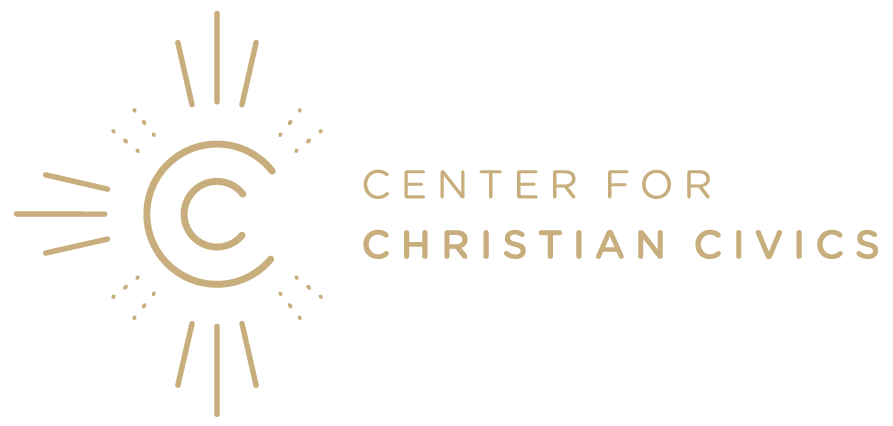Why Would a Beltway Insider Start Publishing Comic Books?
Mark Rodgers spent 16 years working on Capitol Hill in high-profile staff positions, working on issues like poverty alleviation, global AIDS, and abortion. Since leaving Capitol Hill, he has founded The Clapham Group, which offers consulting and communications services to organizations like Cardus, the College Board and the ONE Campaign. He also founded Wedgewood Circle, which helps promote the creation of art and entertainment that celebrates the good, true and beautiful. He has served as a producer on movies like Martin Scorsese’s Silence, and has worked closely with artists such as Bono, Patty Heaton and The Fray.His most recent venture is Cave Pictures Publishing, a new comic book publishing imprint surfacing stories that “speak to the soul and invite readers to explore new perspectives on life.” I recently spoke with Mark about the relationship between his career in politics and his career in the arts, and where he thinks ventures like Cave Pictures Publishing fit in the recent history of Christian political life.
Rick Barry
You were working first primarily in politics and now you have these twin ventures of policy and culture shaping—government and politics on one hand (The Clapham Group), and the arts on the other (Wedgewood Circle, Cave Pictures Publishing). I'm just wondering what you've learned about yourself or about politics and policy from the work you've been doing in the arts.
Mark Rodgers
I would say in my own work, I'm a bit more of a Hannah More now than a William Wilberforce, but I still do live out both of those in our efforts.I first heard about William Wilberforce in 1984 when my pastor at an Episcopal church in Pittsburgh, John Guest, preached on Wilberforce, having just read the Garth Lean biography, God's Politician. So I'd say really for the inspiration and aspiration of my vocation, Wilberforce was the primary figure for decades. Then I became aware of Hannah More's work when I became more a student of the Clapham community, that Wilberforce was part of. Hannah More was a playwright and a poet, and she was everything that Wilberforce was in terms of a social reform, a force of nature, a force of personality. She was a leading social reformer in England, but her notoriety—in a good way—came from her creative efforts. She was a playwright and she was a poet under this large framework called “Reformation of Manners,” which was an umbrella for other efforts.William Wilberforce (1759–1833) was a British politician and activist best known as a leading force in the faith-based movement to end the slave trade.Hannah More (1745–1833) was a British writer, poet, philanthropist and activist. The two were members of a group of social reformers called The Clapham Community. Friends and allies in their efforts to end the practice of slavery and spurred on by their Christian faith, they approached the problem through both policy (enforcing different behaviors) and through the arts and culture (helping to re-shape the kinds of behaviors people aspired to).
She contributed story to their efforts in the same way that Wilberforce contributed public policy, and they saw those as synergistic, as complementary, as hand-to-glove, the both/and. You're not going to shape behavior through policy but through the moral imagination.
So for me I'd say I’ve moved from a focus on Wilberforce to, now, a bit of a focus on Hannah More, and continue to look for those projects in my vocation that bring the right and left together. I do find that creative storytelling in all of its forms is one of those rare respites from the culture wars that dominate our politics, and create a shared experience where empathy can be built and people can develop a shared story, a narrative for a better and a just society.
RICK BARRY
Talk a little bit about your own background and interest in comic books.
MARK RODGERS
In my adolescence, I can remember spending hot summer days lying on a hammock and reading comic books, the moral plays that they could be of good vs. evil. I think I always felt inspired by it. I remember fondly walking to the 7-11 after church with 25 cents to buy a 15-cent comic book and a 10-cent Slurpee. So there are just those things in our memory that we come back to and we remember as formative. I think for others it might be feature films. Obviously now it might be Zelda.
I wasn't a reluctant reader but I would say that comic books certainly bridged my reading and I think they were really helpful to keep me an active reader for a certain period of my life. I don't know if that tends to be more of a male challenge. I've read some studies where that appears to be the case but certainly in my life, my sisters were more voracious readers than I was. Comics became, for me, a way to bridge me into reading and then eventually I just became voracious with all kinds of reading.
But I remember clearly a period where longer-form reading was more difficult and comics kept me engaged in reading.
RICK BARRY
How did you develop the stories that are being told through Cave Pictures Publishing? Did you approach writers and artists? Or did you solicit pitches to see what came in?
MARK RODGERS
We identified a couple of intellectual properties that we felt were well-aligned, that we chose to develop first. Two of those properties are George MacDonald properties. MacDonald was a 19th century writer who really pioneered what you might call “adult fairytale fantasy.” Lewis Carroll, in fact, wrote Alice in Wonderland for MacDonald's children.
Storytelling can create a shared experience where empathy can be built.
So our first graphic novel or comic book series, the first we committed to, is based on a George MacDonald story called The Light Princess. Interestingly, Tori Amos, the singer, just last year produced a musical in London based on The Light Princess. It's one of MacDonald's best-known properties.
But I think MacDonald is best known for really shaping C.S. Lewis. C.S. Lewis read a book that MacDonald wrote called Phantastes and Lewis said that that book “baptized his imagination.” That book really was his first step away from atheism into the recognition that there was something outside of himself that he felt like a siren call to pursue. That was through his imagination, not through an apologetic. It was really creative content that was, for Lewis, the beginning of his own faith conversion or faith story—and that was MacDonald's work.
So the second property of MacDonald that we also chose early to develop was Phantastes. The Light Princess is a much more traditional fairytale that's accessible as a children's story—though it has clearly depth of meaning and I'd say there's a lot of moral and spiritual gravity to it, pardon the pun. An adult reader can draw an awful lot from it. Whereas Phantastes, I think, was written as much more of an adult fairytale. It is full of literary references. It's a much more complex story. It's a bit more obtuse in some ways, although I think our writers really pull the essence out of it.
RICK BARRY
Most of what you're publishing out of Cave Pictures is a few levels of removed from our day-to-day reality—fantasy or science fiction that requires a lot of world-building around it. But you're also coming out of the gate with Appalachian Apocalypse, which not only takes place somewhere that is a little bit more recognizably our world but also is dealing with a region and demographics that are pretty heavily politicized—it stars characters who might not necessarily read the same way to people in every part of the country.
Even having done a campaign where my district overlapped with Appalachia, I know that a lot of people who are native to that region also tend to get a little protective of its image. I know you've been a political operative for quite a while and so you probably knew that it could be hard to portray especially people from the culturally complicated region of Appalachia in ways that are informed and nuanced if you're not deeply embedded in Appalachian culture. So what was the process of shepherding that story to life like for you and for the creative team?
MARK RODGERS
I'm very aware that my own political position could mischaracterize Cave as having a political agenda and that would be very detrimental, I think, to the team at large and the desires we have for story to be almost a respite from the polarization taking place in the culture, as a unique journey where people can come together at Thanksgiving dinner and all laugh or cry over a movie they just watched together.
We were wanting very much to create stories that could be shared for people from across the red and blue spectrum, in the same ways that Silence and other projects I've been involved with have. In this particular case, one of my favorite films is The Apostle, starring Robert Duvall. He spent a fair amount of time just living with Pentecostal and Fundamentalist communities, the communities that he was portraying a preacher from, and he really grew to appreciate and love the community. When that film came out, there was honest appreciation from the community itself for how they were portrayed.
[With Appalachian Apocalypse,] we struggle for a story as funny and quirky and eccentric as it is that would have that same respect and honor for [Appalachian] communities.
The other variable is to find the right creative team that honors and understands and doesn't have a cynical view of that community. Ethan Nicolle in particular comes from a more rural area. He did Axe Cop, if you know that series. He also did recently one called Bearmageddon, which is about a group of blue hipsters who are living “slacktivist” kind of lives, kind of rejecting all those rugged traits that one needs to survive in the wilderness, and they end up getting stuck after an alien invasion turns bears into these creatures that are invading the cities. They end up having to depend heavily on a mountain man for their survival. It's very funny, it's quirky, it's very eccentric. Ethan has a great style that we felt really fit this series. He invested a ton of time in visuals and the ways to work with Billy Tucci on telling that story visually and I think he bullseyed it.
RICK BARRY
You opened the interview by saying these stories are a respite from the culture wars, while also describing them as vehicles for appreciating other communities. Those two things might seem to be in tension—either you have to think about “those other people,” or you get a break from dealing with them. But it seems to me that the only viable way out of the culture wars, or out of what I’m calling this “crisis of empathy” we have right now, is to deliberately develop empathy for “others.”
MARK RODGERS
I think that's right. "Respite" maybe would be more escapist content that's meant to distract us or take us out. We've selected content which I think hopefully brought us deeper while avoiding the polarized framing that, frankly, politics have not just contributed to but are now limited by. So that's a good point. It's not “getting away from,” but “better understanding,” sharing common experience or reimagining the common good that I think politics has failed to provide.
Interested In Reading More?
We're sharing an excerpt from one of Cave Pictures Publishing's comic books on the Center for Christian Civics Facebook page. If you'd like to read Appalachian Apocalypse, The Light Princess or any other Cave Pictures Publishing title, visit your nearest comic shop and ask them to solicit the series in their next order.

